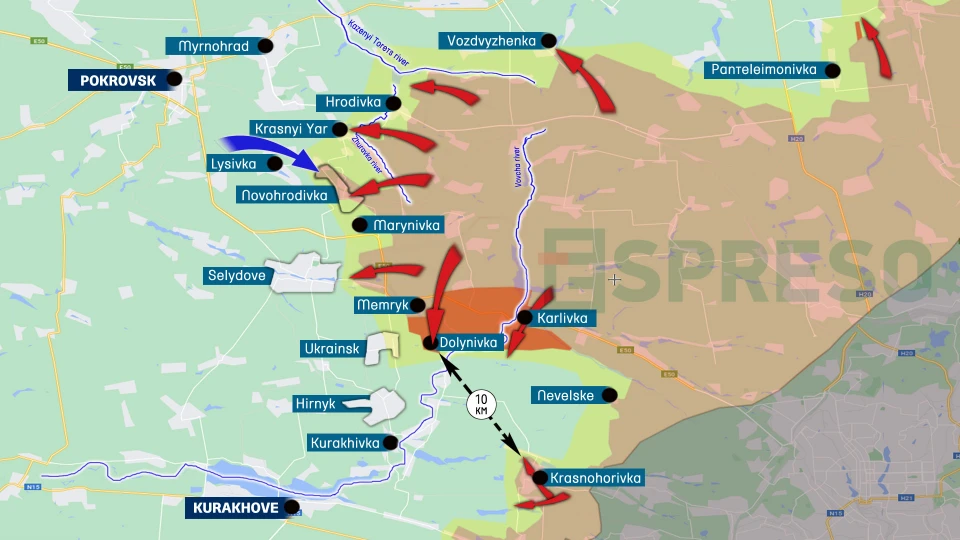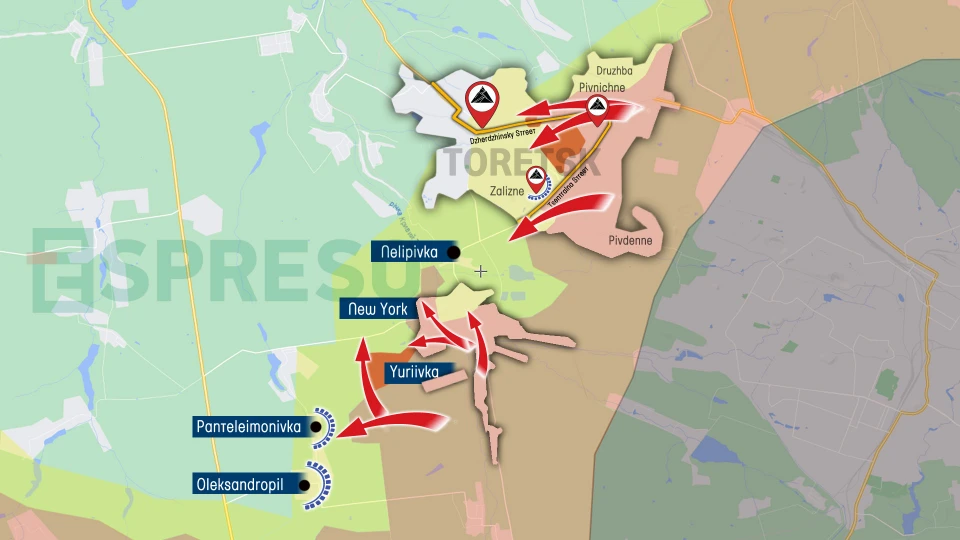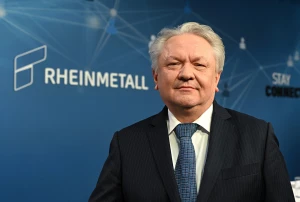
Where Russia will likely deploy Iranian Fath-360 missiles. Serhiy Zgurets's column
Russia may attempt to use Fath-360 missiles to halt the advance of Ukrainian troops into Russian territory in the Kursk region
On Armenia's transfer of air defense systems to Ukraine
I'll start with some interesting news that is already making Russian military officials tear up. It is alleged that Armenia has handed over almost all air defense equipment to Ukraine, including Buk, Tor, S-300, and Osa missiles along with missiles. There is no absolute confirmation of this information yet, but we know that the Armenian armed forces do have a fairly powerful air defense fleet.
They had three divisions of S-300 air defense systems, several divisions of Buk air defense systems, up to 4 Tor air defense systems, and a significant number, 70 or 90 units, of Osa air defense systems that are capable of shooting down UAVs. But all this number was calculated before the second war over Nagorno-Karabakh.
Armenia is now completely revising its air defense arsenal and completely abandoning Soviet, let alone Russian, models. Armenia has signed a number of contracts for air defense equipment with France. Most likely, the information about the possibility of transferring air defense systems from Armenia to Ukraine may well be a reality.
On Iran's supply of ballistic missiles to Russia
Ukraine urgently needs air defense systems because the missile and drone threat from Russia is not diminishing and may even increase. This is in light of foreign media reports suggesting that Russia may have already received Iranian Fath-360 surface-to-surface ballistic missiles. However, experts analyzing the wreckage of Russian missiles have found no evidence indicating that such missiles are currently in use.
But we do know that Russia allegedly received about 200 missiles, as the Guardian reported. U.S. officials have expressed concern over Iran's moves. While the Iranian government has denied reports that it is transferring missile weapons to Russia, some politicians in Tehran have indirectly admitted that their country is exporting both drones and missiles to Russia.
A member of the Iranian parliament's National Security Commission said that Iran needed to import grain and soybeans. And one part of a certain deal involved the supply of military drones to Russia, and the other part involved missiles. He said that we are giving missiles to Hezbollah and Hamas, so why not give them to Russia.
What kind of missiles are these? The Fath-360 tactical ballistic missile is a relatively new missile that appeared in 2020. It is closer in range and power to the Russian Tornado-S or Soviet Smerch MLRS. The range of this missile is 120 km and the weight of the warhead is 150 kg, which is similar to Smerch. The Fath-360 is launched from a ground launcher, which can contain six, four or two missiles.
However, while the Smerch strikes an area, this missile allegedly has an inertial guidance system and is also guided by the Russian GLONASS satellite navigation system. The declared accuracy is up to 30 meters off target, but this is advertising data that has not yet been confirmed.
So, if such missiles have been delivered, what conclusions should be drawn? We are talking about 200 missiles. The missiles can be shot down by air defense systems, including S-300 and Buk systems, but the most relevant way to combat such missiles is to destroy the launchers on the territory of the Russian Federation using ATACMS, which have a range of up to 300 kilometers. There is a question of lifting restrictions on the use of these missiles. Ukraine needs to put pressure on its partners to get permission.
As for where these missiles can be used. Most likely, we can assume that Russia will try to use Fath-360 missiles to stop the advance of Ukrainian troops on Russia's territory in the Kursk region. Why is this so? Because there are safe nuances for the Russian army. First, they will not be jammed. GLONASS operates on Russian territory, and Ukrainian electronic warfare equipment does not completely cover this area. On the other hand, certain requirements of international sanctions will be blurred, because when the use of these missiles is confirmed, it will be said that Iran has transferred non-nuclear weapons to Russia and that the weapons were not intended for use outside the national territory of the Russian Federation. Under such circumstances, the use of Iranian missiles blurs the “red lines” regarding the localization of the war within Ukrainian territory, and this is important.
If some allies are not ready to lift restrictions on supplies and on the use of ATACMS, this does not mean that the pressure from Ukraine should be less on its partners. What are the guarantees that after the Fath-360 missiles with a range of 120 km, Russia will not get Fateh-110 tactical missiles with a range of more than 500 km? Reuters also published such reports at the beginning of the year. They have not been confirmed, but we can see that the Iranian threat exists and that Ukraine desperately needs countermeasures.
Situation at the frontline
Each direction on the front is difficult, but let's start with the Pokrovsk direction, which remains in first place in terms of the number of clashes, although the Russian armed forces have suspended their advance towards Pokrovsk, Myrnohrad and Selydove. However, we can hardly talk about any stabilization on this ledge, which is about 30 km deep and 20 km wide. This ledge was formed against the backdrop of Russian troops advancing along the railroad, starting from Avdiivka in February, and then to Ocheretyne, which was captured in late July. And then Russia occupied Novohrodivka in late August. So it turns out that over the past month, the Russian army has advanced about 10-13 kilometers.

Everyone said that the front was collapsing and that the situation in the Kursk region would not help. But now the situation looks completely different. Firstly, a number of Ukrainian brigades have blocked Russia's advance in the Pokrovsk sector. It turned out that Ukraine has reserves not only to attack the Kursk region. Let me mention the Kara-Dag National Guard Brigade, the 93rd Mechanized Brigade and other brigades operating in the Pokrovsk area. By the way, there are a number of published images that show that new lines of fortification are being actively built. Fortifications have already been built between Pokrovsk and Myrnohrad, as well as a circular defense around Pokrovsk itself. There are results when they are needed. We hope that these defense lines will actually be effective, and this will influence the future nature of the fighting.
Now the Russian army is not so much trying to advance to Pokrovsk, although the main focus of Russian actions is on the southeastern flank of this Pokrovsk ledge. Because in recent weeks, Russian troops, having occupied Karlivka, have been moving further south, capturing Halytsynivka and Dolynivka.
Russia is trying to advance along both banks of the Vovcha River to the south with the intention of reaching Kurakhivka. Fighting is currently underway north of Hirnyk. The occupying Russian forces also expanded their control over Krasnohorivka and captured Nevelske, which had been defended for 2 years. Nevelske is a certain hill on which there was a stronghold. However, the Russian army, using its superiority in manpower, equipment, and aircraft, captured Nevelske. Although Russia reported the capture of Nevelske back in March, we see that the reality is different.
In the triangle of Krasnohorivka - Nevelske - Halytsynivka, Russia is trying to put pressure on Ukrainian troops along the perimeter. Some people talk about the double envelopment formed by Russian troops on the border of Pokrovsk and Kurakhove directions. I don't think it's about encircling Ukrainian troops, although there is indeed such a threat. Russia does not have enough forces to quickly close such encirclement, but the logic of this area is that it is logical for Ukrainian troops to leave. In my opinion, such measures will be implemented by Ukrainian military leadership.
If Russia makes its way to Kurakhove, it will want to level the front line from Kurakhove to Vuhledar. It is the Vuhledar area that is now coming to the fore, as Russia's hostilities have also intensified there.
Northwest of Vuhledar is the village of Vodiane. On September 9, DeepState reported that Russia had captured Vodiane, which poses a threat to the road leading from the north to Vuhledar and creates a new potential direction for strikes on the area surrounding Vuhledar itself. However, it is worth noting that around noon, several Ukrainian military statements indicated that fighting in Vodiane was still ongoing, suggesting it might be premature to confirm the complete capture of the village.

But in any case, the trend is that Russia wants to take Vuhledar from several directions. Previously, Prechystivka was captured, and attacks continue from the west and north of Vodiane. And then Russia attacked Vuhledar from the direction of Pavlivka, in fact, these are frontal attacks. Russian troops attacked using motorcycles, but Ukrainian troops dismantled these motorcycles for parts.
Vuhledar is located on a hill, it is a fortress city that has been defending itself from Russia's advance for a long time. The town has industrial buildings with partially tall buildings. Everything in front of Vuhledar is mined. Russia can be successfully deterred by using anti-tank mines. However, the frontal Russian attacks, which lasted for almost a year, have now changed to flanking attacks from Vodiane and Prechystivka.
I hope Ukraine's General Staff understands all the risks of this situation, and the possibility of reinforcing this area is as important as reinforcing other areas. In any case, the Kurakhove - Vuhledar axis is also important and a priority for Russia, so Ukraine's defense of this sector of the frontline, relying on the forces and means of Ukrainian brigades, especially artillery and other means of destruction used by the Ukrainian Armed Forces to defend Ukraine, remains important and a priority.
- News











































